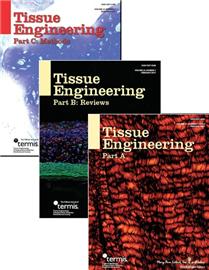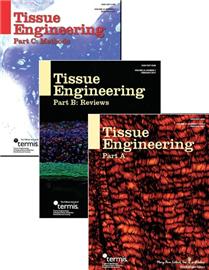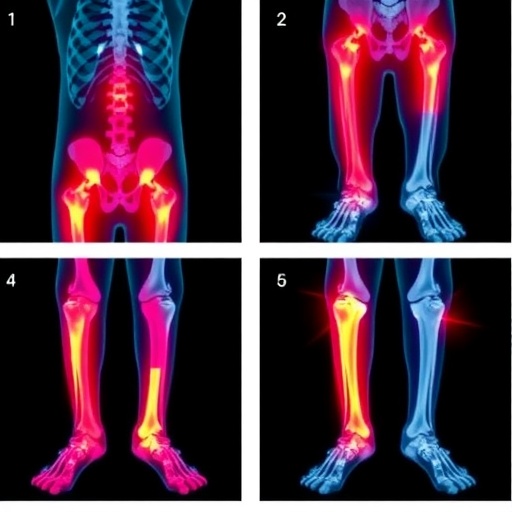
Credit: Mary Ann Liebert, Inc., publishers
New Rochelle, NY, May 4, 2017–Researchers have shown that a novel cage constraint can prevent engineered cartilage from swelling during growth in culture, leading to better collagen stability and enhanced functional properties of the cartilage. The innovative cage system, designed to limit growth of engineered tissues within a fixed volume and shape while providing sufficient nutrients, is described in an article in Tissue Engineering, Part A, a peer-reviewed journal from Mary Ann Liebert, Inc., publishers. The article is part of a special issue on Musculoskeletal Tissue Engineering and is available free on the Tissue Engineering website until June 2, 2017.
Robert Nims, Gerard Ateshian, PhD, and coauthors from Columbia University, New York, NY, created the cage constraint system for growing engineered cartilage in culture to overcome the common problem of osmotic swelling pressure, which destabilizes immature collagen, inhibiting the development of a strong collagen framework needed to support cartilage formation. The researchers studied the growth of engineered cartilage constructs in two different types of scaffolds — agarose and cartilage-derived matrix hydrogel — and compared it to unconstrained growth.
In the article entitled "Constrained Cage Culture Improves Engineered Cartilage Functional Properties by Enhancing Collagen Network Stability," the authors report the differences in swelling-induced expansion, functional properties, and collagen content of the cartilage constructs grown in the two types of scaffolds or under unconstrained conditions.
"The management of mechanical forces in the development of engineered tissues is emerging as an important aspect of control. In this study, three-dimensional constraint is shown to make an important contribution to appropriate tissue maturation," says Tissue Engineering Co-Editor-in-Chief Peter C. Johnson, MD, Principal, MedSurgPI, LLC and President and CEO, Scintellix, LLC, Raleigh, NC.
###
Research reported in this publication was supported by the National Institutes of Health under Award Numbers R01 AR060361, R01 AR046568, R01 DE016525, and P41 EB002520. The content is solely the responsibility of the authors and does not necessarily represent the official views of the National Institutes of Health.
About the Journal
Tissue Engineering is an authoritative peer-reviewed journal published monthly online and in print in three parts: Part A, the flagship journal published 24 times per year; Part B: Reviews, published bimonthly, and Part C: Methods, published 12 times per year. Led by Co-Editors-In-Chief Antonios G. Mikos, PhD, Louis Calder Professor at Rice University, Houston, TX, and Peter C. Johnson, MD, Principal, MedSurgPI, LLC and President and CEO, Scintellix, LLC, Raleigh, NC, the Journal brings together scientific and medical experts in the fields of biomedical engineering, material science, molecular and cellular biology, and genetic engineering. Tissue Engineering is the official journal of the Tissue Engineering & Regenerative Medicine International Society (TERMIS). Complete tables of content and a sample issue may be viewed online at the Tissue Engineering website. (http://www.liebertpub.com/ten)
About the Publisher
Mary Ann Liebert, Inc., publishers is a privately held, fully integrated media company known for establishing authoritative peer-reviewed journals in many promising areas of science and biomedical research, including Stem Cells and Development, Human Gene Therapy, and Advances in Wound Care. Its biotechnology trade magazine, GEN (Genetic Engineering & Biotechnology News), was the first in its field and is today the industry's most widely read publication worldwide. A complete list of the firm's 80 journals, books, and newsmagazines is available on the Mary Ann Liebert, Inc., publishers website. (http://www.liebertpub.com/)
Media Contact
Danielle Giordano
[email protected]
914-740-2198
@LiebertPub
http://www.liebertpub.com
############
Story Source: Materials provided by Scienmag





